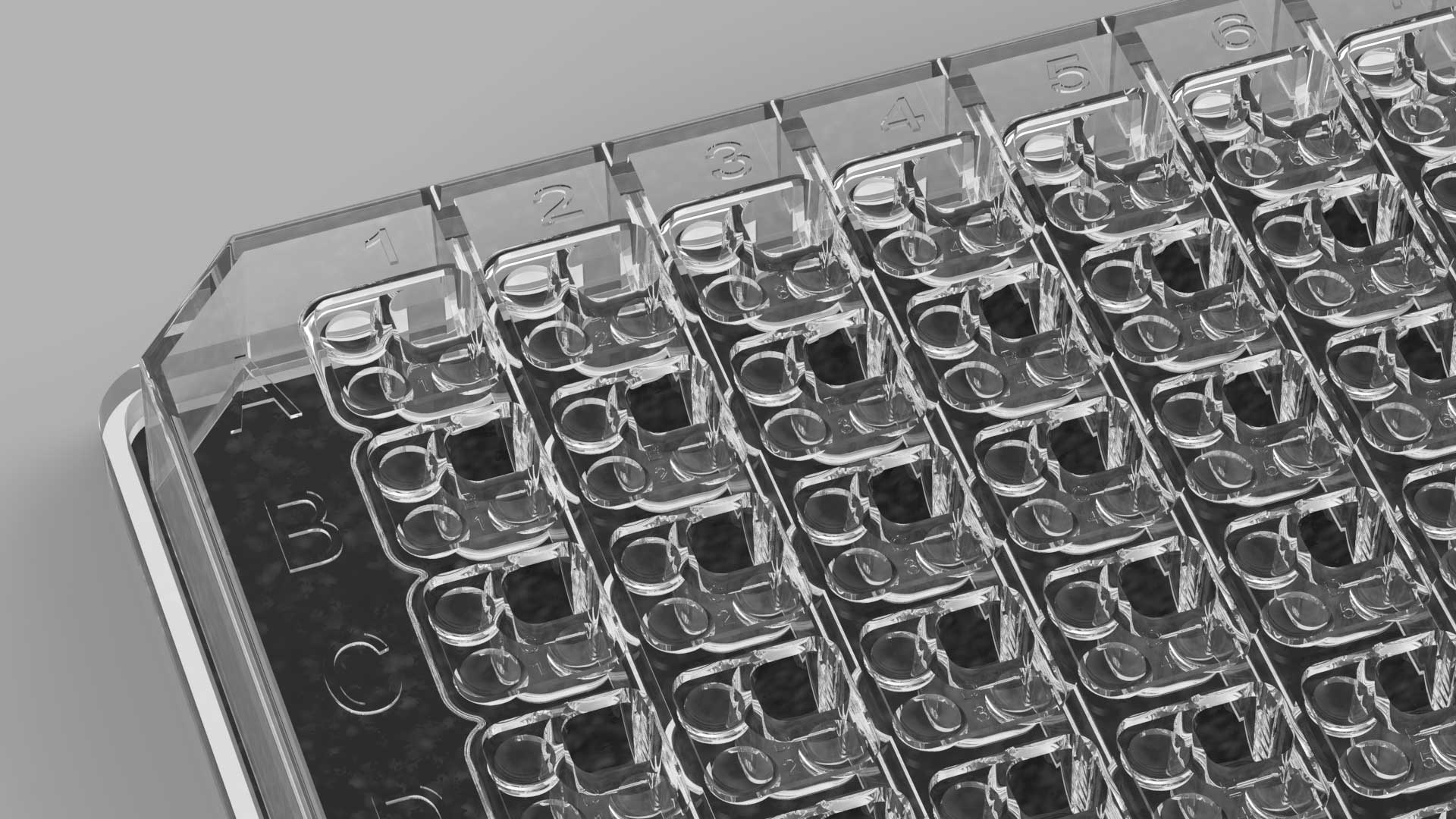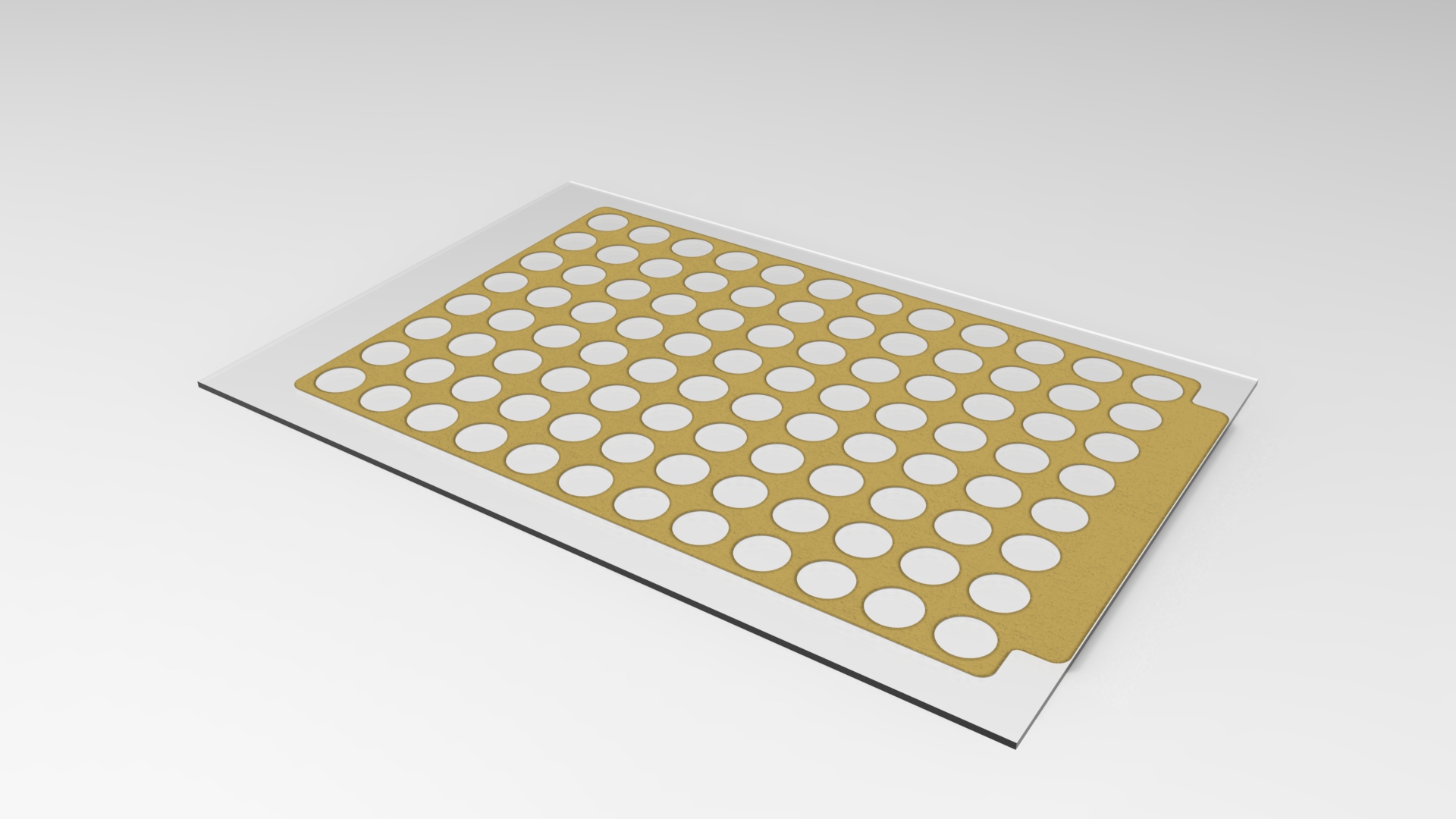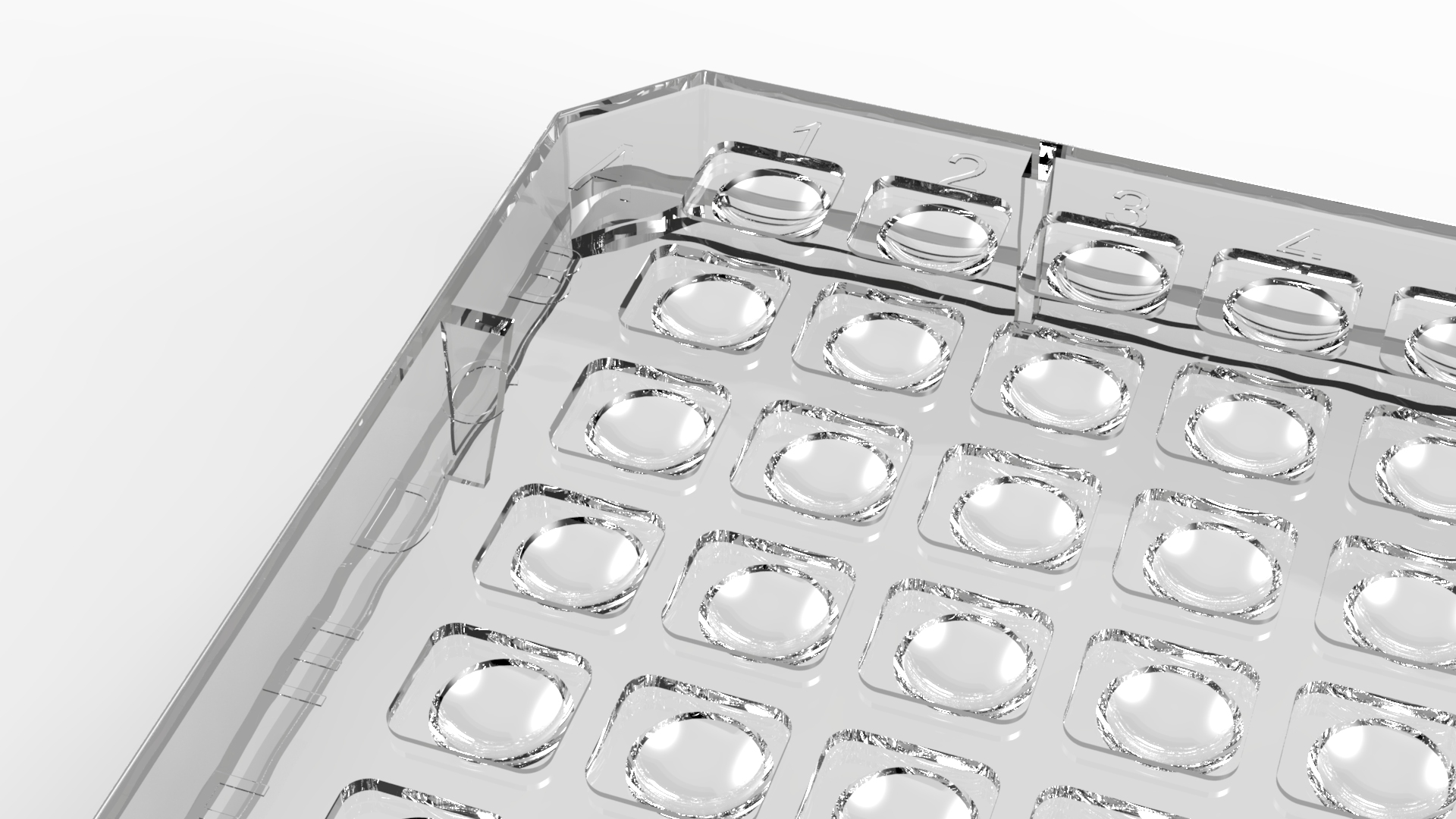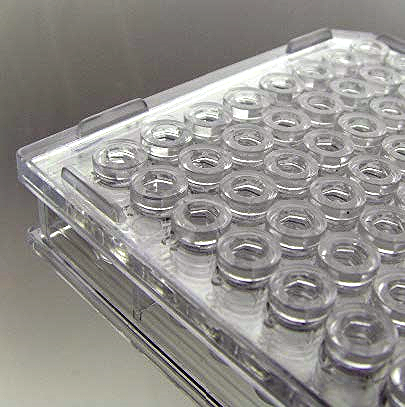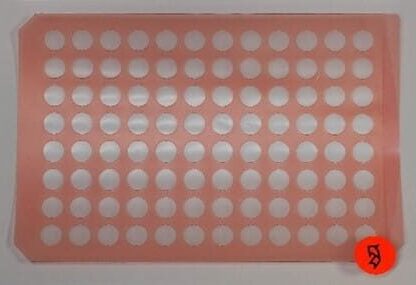CRYSTALLISATION
SWISSCI Crystallisation products provide a full range of high-quality multi-lens plates for protein crystal growing and retrieval including sitting drop, hanging drop, and LCP plates and seals.
Sitting Drop
The Sitting Drop range in 2 lens, 3 lens, and 48 well formats are available in 3 polymers and offer easy crystal retrieval. Raised, wide wells allow for effective crystal mounting. The wells are conically-shaped creating a lens effect for perfect illumination.
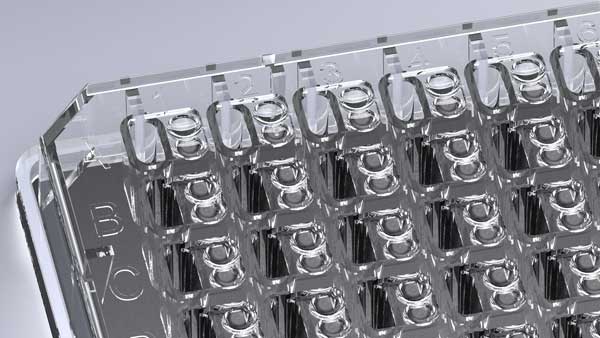
2 Lens Crystallisation Plates
The MRC Crystallisation Plate comes in a 96-well plate format, allowing easy crystal viewing and retrieval and available in UV, PS or UVXPO.
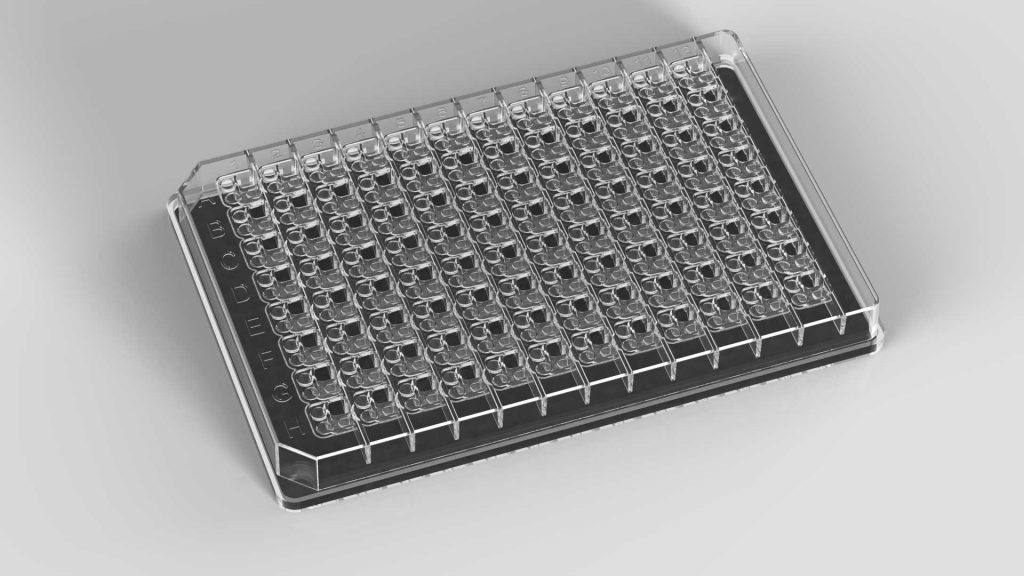
3 Lens Crystallisation Plates
The 3 Lens Crystallisation Plate is ideal for protein crystallisation, presented in a 96-well plate format and available in 3 polymers.
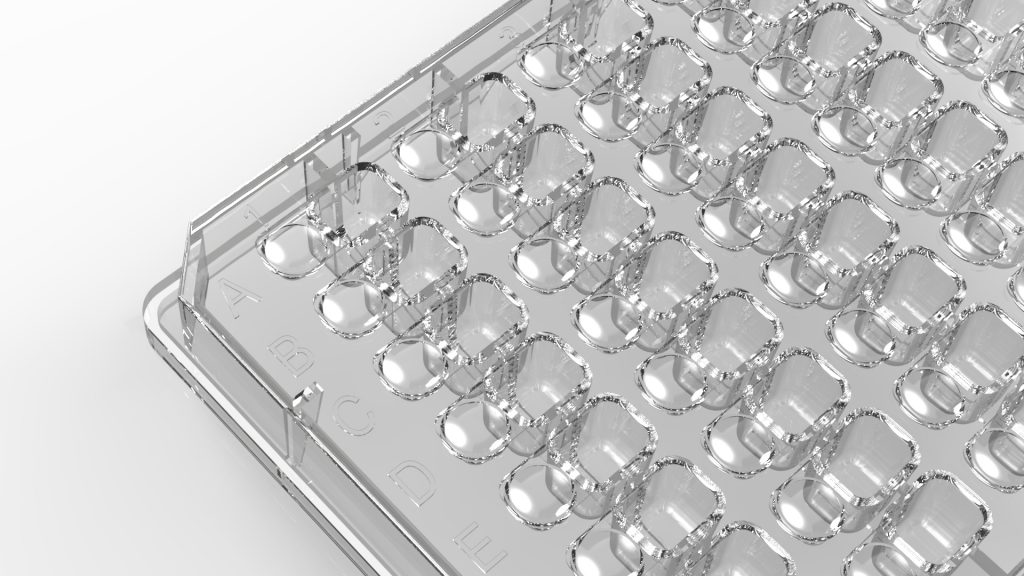
MRC Maxi 48 Well Plates
The MRC Maxi optimisation plate is a new design for macromolecular crystallisation in a 48-well format.
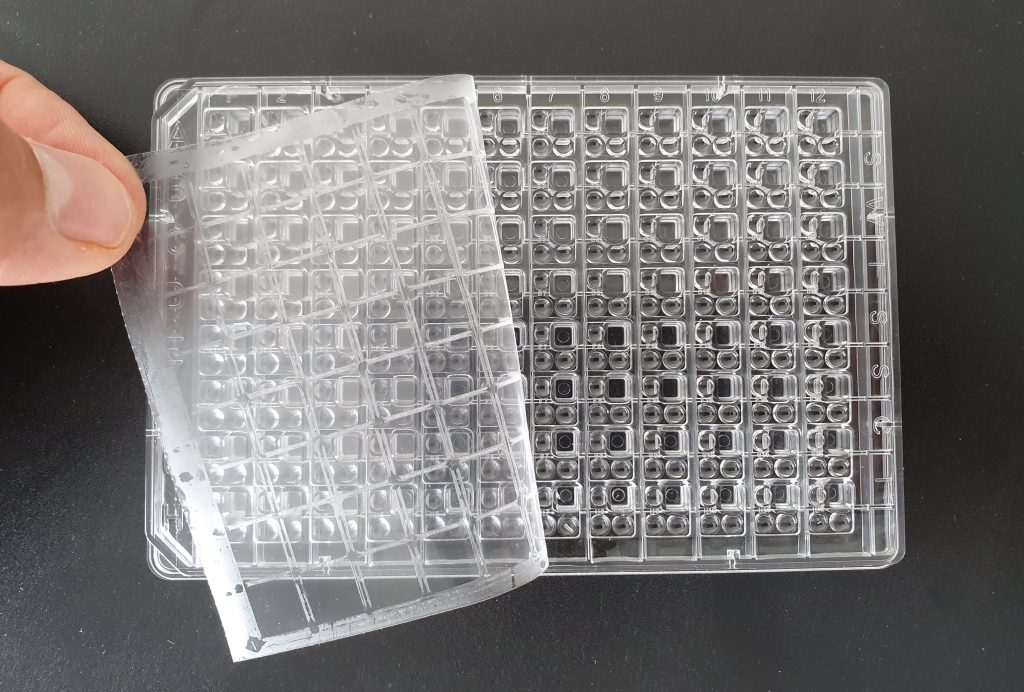
UVXPO Sealing Sheets
SWISSCI’s UVXPO Sealing Sheets are a 50 µm film with 50 µm inert encapsulated silicone adhesive.
In-situ Crystallisation Plate Seal
A bespoke plate seal for in-situ X-ray diffraction experiments
Hanging Drop
The Hanging Drop plug plate is a novel system for protein crystallisation in a 96-well format. For the first time, individual wells can be identified and removed without any disturbance to the growing crystals inside the plate. The SWISSCI Hanging Drop Crystallisation Plate Seal comes ready to use with dust-free protective coating and speciality polymer base.

Hanging Drop Plug Plate
The Swissci Hanging Drop Crystallisation Plug Plate is a novel system for protein crystallisation in a 96-well format.

Hanging Drop Round Plate Seal (UVP)
The Non-UVP Plate Seal comes with dust free protective coating and specialty polymer base, available in 100 micron

Hanging Drop Round Plate Seal (Non-UVP)
The Non-UVP Plate Seal comes with dust free protective coating and specialty polymer base, available in 100 micron
LCP
SWISSCI Lipidic Cubic Phase Crystallisation (LCP) products facilitate the set up of LCP crystallisation experiments. All components are available individually to allow bespoke user set up.

LCP Screening Kit
The Lipidic Cubic Phase Crystallisation Screening range facilitates the automation and increased throughput of LCP crystallisation set-ups.

LCP Modular Range
The SWISSCI LCP Modular range offers more flexibility to membrane protein crystallographer LCP experiments with three choices of LCP Bases, combined with one of five pre-affixed LCP Double Sided Pressure Adhesives.

LCP XPOL Kit (60μm 7mm)
The Non-UVP Plate Seal comes with dust free protective coating and specialty polymer base, available in 100 micron

LCP XPOL Kit (120μm 7mm)
The Non-UVP Plate Seal comes with dust free protective coating and specialty polymer base, available in 100 micron

LCP Sealing Paddle
The LCP Sealing Paddle activates Pressure Adhesive to ensure a perfect seal.
Microbatch
The MRC Under Oil 96 Well Crystallisation plate uses oil as a seal and active diffusion mechanism for the purpose of running macromolecular crystallisation under oil. The plate was developed at the MRC Laboratory of Molecular Biology (Cambridge, UK) in collaboration with Dr. Jan Löwe and colleagues.

MRC Under Oil Crystallisation Plate (96 Well)
The SWISSCI MRC Under Oil Crystallisation plate is a product desinged for macromolecular crystallisation presented in a 96-well format.
Interface Diffusion
Capillary diffusion offers a broad variable screen in one experiment.

Crystal Harp Crystallisation Plate
The Crystal Harp plate is designed for crystallization based on capillary diffusion and can be used for both crystallization screening and optimization.

MRC UVP Micro-channel Chip
The Swissci UVP Micro-channel Chip features a total of five passive flow-through mixers, which inter mix the smallest liquid volumes within milliseconds.
Dialysis
The disposable Diaplate™ is a 96 well micro-dialysis has a range of applications including Crystallisation.

Diaplate™ 3.2 μl Capacity Dialyser
The disposable Diaplate™ is a 96 well micro-dialysis plate ideal for the desalting of protein from very small volumes of up to a maximum of 3.2 μl. The sample solution is pipetted into each of the 96 wells with up to 0.35 ml dialysis solution used for exchange.
